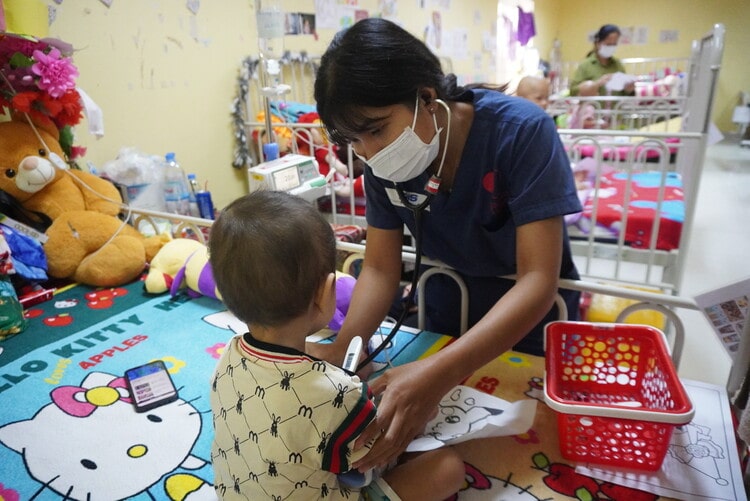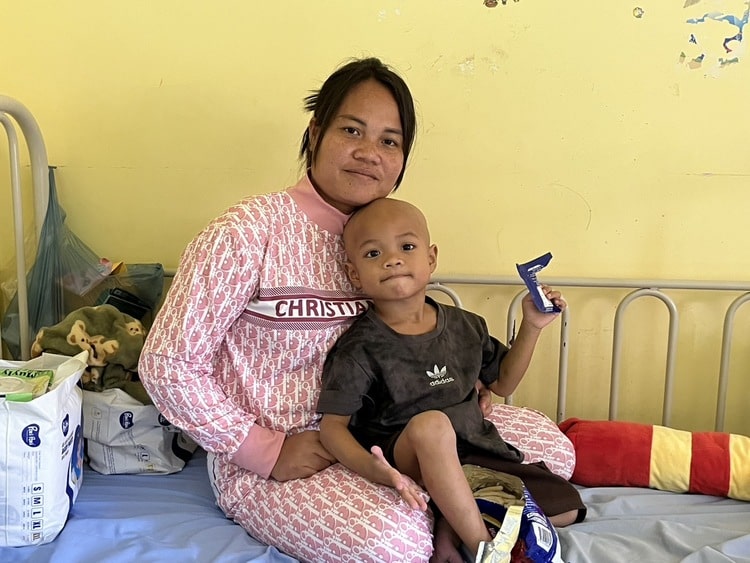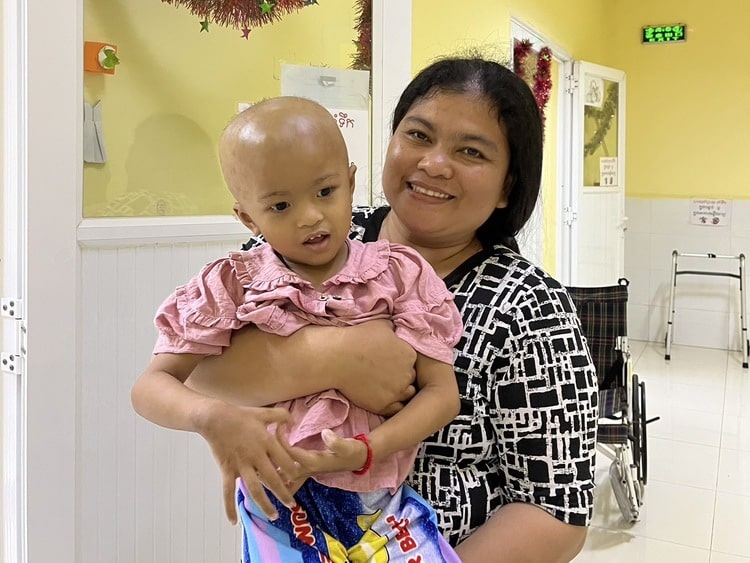As an intern with Japan Heart, I’ve had the opportunity not only to witness the realities of medical care, but also to engage deeply with the culture of Cambodia.
What left a particularly strong impression on me was how traditional healing practices remain a part of daily life, influencing when and how people seek modern medical treatment. I was also struck by the vital role that families play in the healthcare setting.
In Cambodia, it is customary for family members to stay with patients during hospitalization, providing meals and daily care. Illness is not faced alone, it is a shared experience, supported by the warmth and involvement of the entire family.
Traditional Healing Practices Deeply Rooted in Cambodian Life
In Cambodia, traditional healing methods such as Kok Chrol and Chop K’nyol are still widely practiced in everyday life.
These treatments are familiar and accessible options for common ailments like colds, muscle stiffness, and stomachaches, and are often performed at home.
Kok Chrol involves rubbing the skin with a metal coin or the lid of a ceramic jar to stimulate blood flow and “release bad blood.” It is believed that the resulting red marks left on the skin help restore internal balance and improve physical condition. This method is easy to perform and carries little financial burden, making it especially popular among everyday households.
Chop K’nyol, often known internationally as cupping therapy, uses glass cups placed on the skin to create suction and promote circulation. It is said to relieve muscle tension, reduce fatigue and pain, and is frequently used as a preventive measure.
Both practices offer a sense of comfort and control, as they can be carried out within the family. In that sense, they represent the most accessible form of healthcare for many people in Cambodia.
When we spoke with a nurse named Butty, she shared that traditional healing practices have been passed down through generations in her own family as well.
According to her, it’s common in Cambodia for people to try traditional remedies first when they feel unwell. Only if their condition doesn’t improve will they consider going to a hospital.
This mindset is especially evident among families of children with serious illnesses such as pediatric cancers. In cases like osteosarcoma, for example, families may first attempt to relieve swelling or pain through traditional methods. As a result, hospital visits are often delayed.
We have seen patients arrive at our facility with conditions that have already progressed significantly, sometimes leading to more severe outcomes that might have been preventable with earlier treatment.
While this trend is gradually declining in recent years, there are still cases where people rely solely on traditional practices and forgo modern medical care entirely.
Behind this issue are not only challenges such as medical costs and lack of transportation, but also a deeply rooted cultural belief: that hospitals are places to go only in the most serious, life-threatening situations.

“Tradition and Reassurance” – Aiyo’s Family Shares Their Story
Through an interview with Aiyo, a young patient currently hospitalized at our facility, and his family, we gained deeper insight into how deeply traditional medicine is woven into daily life in Cambodia.
They shared that whenever Aiyo falls ill, the family first turns into traditional remedies, such as Kok Chrol. For issues like skin boils, they boil dried tree branches to create a herbal drink, another example of inherited home remedies. These treatments have been passed down through generations, from grandmothers to mothers, and now to Aiyo’s caregivers.
What stood out to us was the contrast between these practices and the structured approach of modern medicine. While traditional treatments often involve addressing symptoms without a clear diagnosis, Aiyo’s family expressed a strong sense of reassurance in being able to name the illness and follow a concrete treatment plan provided by the hospital.
Modern medical care, with its ability to identify the disease and offer a clear path forward, has become a trusted source of support for the family.
That said, no matter how advanced medicine becomes, it is still the family who stays closest to the patient, offering emotional and physical support every step of the way.
What we witnessed was the quiet strength of the family: acting as a bridge between tradition and modern care, preserving the wisdom of the past while guiding their loved ones toward healing.

The Power of Presence – The Role of Family in Supporting Healthcare
In Cambodia, it is a deeply rooted cultural practice for family members to accompany patients during hospital stays. Families are responsible for preparing meals, doing laundry, and providing daily care. As such, having at least one family member stay with the patient during hospitalization is considered essential.
Through my time working with Japan Heart, I’ve had the opportunity to speak not only with patients but also with their families. What stood out most to me is the deeply ingrained culture of “facing illness together as a family.”
Illness is not seen as the burden of one person alone. Instead, it is something the entire family confronts and supports together – this warm, collective approach to care left a lasting impression on me. It offered a new perspective on healthcare, different from what I’ve seen in Japan.
One experience that truly embodied this was my encounter with Sovanary, a young girl hospitalized at our facility, and her family.
Her mother described the most painful moment during their journey: when her daughter lost her eyesight and the ability to walk. But since being admitted to our hospital, Sovanary has gradually regained her vision and strength in her legs. With a look of relief, her mother told us, “Now, we can finally feel at ease.”
She shared how her trust in her daughter’s recovery has grown through the care provided at the hospital, and she even described the Japan Heart staff as “like angels.” That heartfelt expression has stayed with me ever since.
Despite suffering from her own heart condition and high blood pressure, Sovanary’s mother continues to care for and support her daughter with unwavering strength and hope.
This experience made me realize that the role of family in the medical setting goes far beyond emotional support. Family members are active participants in the healing process, together with medical staff as an integral part of the care team.

What It Truly Means to “Deliver Healthcare”
What I have come to feel most strongly through this experience is that “delivering healthcare” is not simply about providing medicine or advanced technology.
Through everyday interactions and the steady building of trust with medical staff, I have witnessed a quiet shift in how local people view healthcare. More and more, they are beginning to see hospitals as trustworthy places, and medical care as something on their side.
Here, we don’t have the kind of advanced medical equipment found in countries like Japan.
But I’ve come to realize that the true foundation of healthcare lies in something deeper: understanding the local culture, staying close to the people we serve, and building trust—step by step.
The people I’ve met here, their words, their resilience, and their warmth, have deeply influenced my values and the way I want to live my life going forward.
As I continue the remainder of my time here, I want to keep reflecting on what it means to truly “be there” for others—and to put that into action, in my own way.
Daiki Ito
Long-term Student Intern

